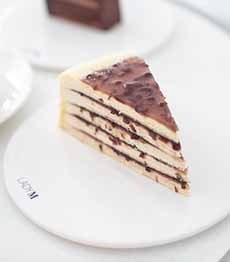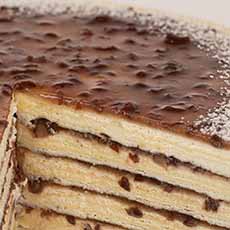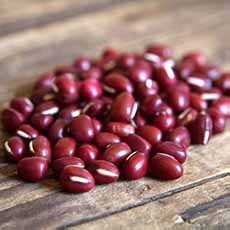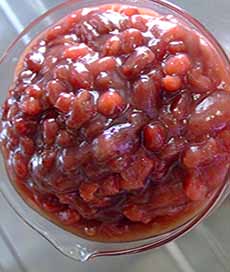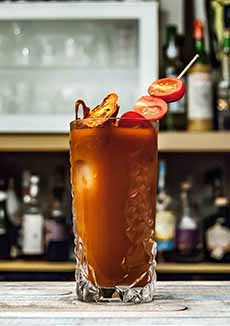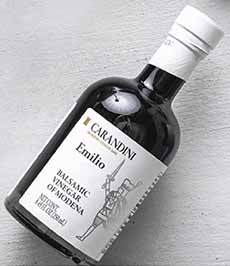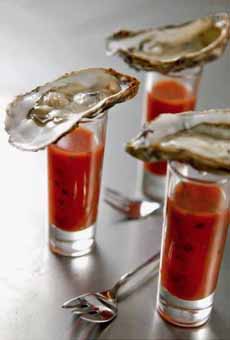|

[1] Savory mini cheesecake hors d’oeuvre with an Italian cracker (taralli) base, cream cheese or goat cheese filling, and a topping of Mortadella. The recipe is below (photo © Veroni).
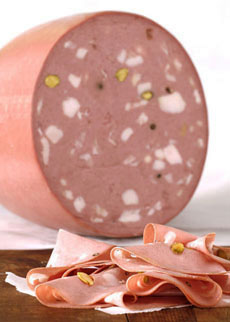
[2] Mortadella (photo © DeLallo).
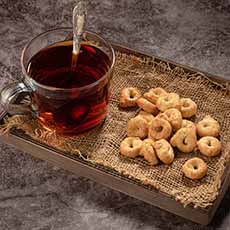
[3] Taralli, used for the base of the cheesecake, is a popular snacking cracker (photo © Evegniy Alekseyev | Pexels).
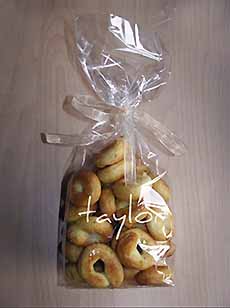
[4] Look for taralli at any shop that carries imported Italian foods, or find them online (photo © Gabriela Taylor | CC BY-NC-SA 2.0 License).
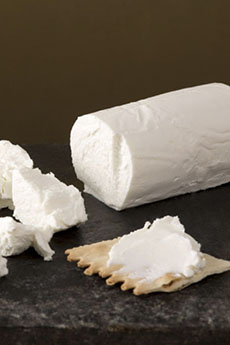
[5] For a tangier cheesecake, use goat cheese instead of the more mild cream cheese (photo © Murray’s Cheese).
|
|
How about a special appetizer that goes so very nicely with a glass of Champagne on Valentine’s Day? We recommend these savory mini cheesecakes.
They’re topped with pink-hued mortadella, although you could substitute prosciutto, serrano ham, and even add some salmon roe (caviar) for a surf-and-turf.
WHAT IS MORTADELLA?
Originating in Bologna, Italy, mortadella (photo #2) is a large Italian sausage made of finely ground, heat-cured pork, which incorporates at least 15% small cubes of pork fat (principally jowl fat, the hard fat from the neck of the pig), plus sliced pistachio nuts.
It is delicately flavored with spices, including whole or ground black pepper, myrtle berries, nutmeg, coriander, pistachios, and/or olives. While it is a sausage, it falls under the category of cold cuts, sandwich meats sliced thin and served cold.
> Check out the different cuts of pork and pork products.
WHAT ARE TARALLI?
Also called tarallini, taralli are the traditional, ring-shaped biscuits of the Puglia region of Southern Italy (photos #3 and #4). Every town in Puglia offers its own version.
They are first boiled, then baked, so that they crunch like a pretzel—but they taste like a wine cracker. You can find them in flavors such as black pepper, fennel, rosemary, and Mediterranean blend (onions, oregano, tomato), and as a more recent touch, as you can see in photo #3, poppyseeds.
Use taralli as a snack cracker, for dipping (its natural sweetness would go well with honey mustard), or serve it with hard or soft cheeses. Taralli also make delicious croutons for soups or salads.
RECIPE: SAVORY MINI CHEESECAKES TOPPED WITHMORTADELLA
Serve these as hors d’oeuvre or plated as an appetizer with a side of mesclun salad. With its intense fragrance and taste, mortadella is a wonderful topper.
Thanks to Veroni for the recipe.
Ingredients For 4 Servings
For The Base
7 ounces taralli, crushed (substitute Ritz crackers or other cracker of preference)
7 ounces unsalted butter
For The Filling
10.5 ounces of cream cheese, goat cheese, or other soft cheese, room temperature
2 tablespoons lemon juice
1 tablespoon lemon zest
Fresh marjoram, chopped*
Salt, pepper, and nutmeg to taste
For The Toppings
3 slices of mortadella
Pistachios
Preparation
1. MIX the crushed taralli and melted butter in a bowl; stir to combine. Place the mixture in 4 small round-shaped molds or cupcake molds and put them in the fridge. In another bowl…
2. MIX the soft cheese with lemon juice, freshly chopped marjoram, nutmeg, salt, and pepper. Add the cream cheese mixture on top of the taralli base.
3. PLACE the mini tarts in the fridge until they are ready to serve. Then decorate them with sliced mortadella and chopped pistachios.
________________
*Marjoram substitutes: fresh basil, herbes de Provence, dried oregano, fresh sage, fresh summer savory, or fresh thyme.
|
